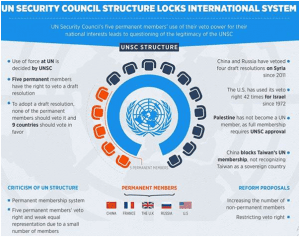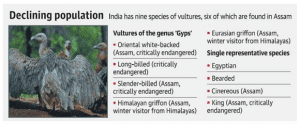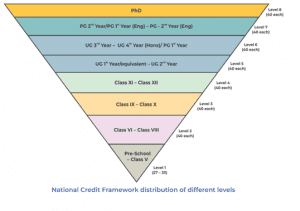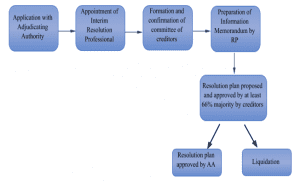DAILY CURRENT AFFAIRS (OCTOBER 20, 2022)
POLITY AND GOVERNANCE
1. TUSSLE IN KERALA: CAN GOVERNOR DISMISS A STATE MINISTER?
THE CONTEXT: Kerala’s Governor recently threatened to sack ministers who “lowered the dignity” of his office.
THE EXPLANATION:
According to the Governor, the CM and Council of Ministers have every right to advise Governor but statements of individual ministers that lower the dignity of the office of the Governor, can invite action including withdrawal of pleasure”.
What role does the Governor play in the parliamentary system?
- The position, role, powers, and conditions of office of the Governor are described in Articles 153-161 of the Constitution. The position of Governor is similar to that of the President at the Union. He is at the head of the state’s executive power, and barring some matters, acts on the advice of the council of ministers, which is responsible, in accordance with the parliamentary system, to the state legislature.
- The Governor is appointed by the President (on the advice of the central government) and, therefore, acts as the vital link between the Union and the state governments. The post was envisaged as being apolitical; however, the role of Governors has been a contentious issue in Centre-state relations for decades.
- The Governor enjoys certain powers such as giving or withholding assent to a Bill passed by the state legislature or determining the time needed for a party to prove its majority — or which party must be called first to do so, generally after in a hung Assembly — which have been weaponised by successive central governments against the political opposition.
Does a Governor have the power to remove a Minister?
- Article 164(1) says state “Ministers shall hold office during the pleasure of the Governor”.
- However, Constitutional experts say the Governor cannot remove a minister in their own capacity without obtaining the sanction of the Chief Minister or consulting with the latter.
- If a Governor removes a minister in their own capacity, that will result in ‘parallel governance’.
- Only when the Chief Minister allows it, then the Governor is empowered to remove the minister.
VALUE ADDITION:
Sarkaria Commission (1983) –
- The Commission was set-up to look into Centre-state relations. It has proposed various additional criteria for appointing someone to the Governorship.
- It proposed that the Governors be appointed after effective consultations with the State Chief Minister and Vice President and Speaker of the Lok Sabha should be consulted by the PM before his/her selection.
- National Commission to Review the Working of the Constitution (2000) –
- The Commission recommended significant changes in the selection of Governors.
- The Commission suggested that the “Governor of a State should be appointed by the President, after consultation with the Chief Minister of that State”.
Punchhi Commission (2007) –
- The Commission proposed that a committee comprising the Prime Minister, Home Minister, Vice President, Speaker, and the concerned Chief Minister should choose the Governor.
- It further recommended deleting the “Doctrine of Pleasure” from the Constitution, but backed the right of the Governor to sanction the prosecution of ministers against the advice of the state government.
- It also argued for a provision for impeachment of the Governor by the state legislature.
INTERNATIONAL RELATIONS
2. CHINA AGAIN BLOCKS 2 PROPOSALS ON PAK. TERRORISTS AT UNSC
THE CONTEXT: Recently, China has blocked a proposal by India and the US at the United Nations to list Lashkar-e-Taiba (LeT) leader Shahid Mahmood as a global terrorist.
THE EXPLANATION:
- This is the fourth time in as many months that Beijing has blocked bids to blacklist Pakistan-based terrorists at the UN. India and the US had proposed that Mahmood, be designated as a global terrorist under the 1267 Al Qaeda Sanctions Committee of the UN Security Council.
Who is Shahid Mahmood?
- According to the US Department of Treasury, which designated Mahmood as a Specially Designated Global Terrorist (SDGT) in 2016, he is a senior LeT member based in Karachi, and has been affiliated with the group since at least 2007.
- “As early as June 2015 through at least June 2016, Mahmood served as the vice chairman of Falah-i-Insaniat Foundation (FIF), a humanitarian and fundraising arm of LeT. In 2014, Mahmood was the leader of FIF in Karachi. In August 2013, Mahmood was identified as a LeT publications wing member”. Mahmood has also travelled to other countries on behalf of LeT.
China blocking terrorist designations in the past
- In June this year, China put on hold a proposal by India and the US to blacklist Pakistan-based terrorist Abdul Rehman Makki under the 1267 Al-Qaeda Sanctions Committee.
- Then in August, China blocked a proposal by the US and India to blacklist the senior Jaish-e-Mohammed (JEM) leader Abdul Rauf Azhar.
- In September, China again blocked a proposal moved by the US and co-supported by India to designate Lashkar-e-Taiba terrorist Sajid Mir as a global terrorist. Mir is one of India’s most wanted terrorists and has a bounty of USD 5 million on his head by the US for his role in the 26/11 Mumbai terror attacks.
What is the 1267 Al Qaeda Sanctions Committee?
- The committee is part of the UN Security Council and its job is to implement international sanctions against terrorists. The other two committees with similar roles are the Counter-Terrorism Committee and the Security Council Committee
- The Al Qaeda committee was established as the Al-Qaida and Taliban Sanctions Committee on October 15, 1999, after Security Council Resolution 1267 designated al-Qaeda and the Taliban as terrorist bodies. In 2011, a separate committee was formed for the Taliban.

ENVIRONMENT, ECOLOGY AND CLIMATE CHANGE
3. TAMIL NADU LAUNCHES MISSION TO SAVE CRITICALLY ENDANGERED VULTURES
THE CONTEXT: Recently, Tamil Nadu Government formed a State-level Committee to set up an institutional framework for the effective conservation of vultures, which almost went extinct in the country at the beginning of the 21st century.
THE EXPLANATION:
- In Tamil Nadu, four species of vultures are found — the Oriental white-backed vulture, the long-billed vulture, the red-headed vulture, and the Egyptian vulture. “The first three are residents and can be found in the landscapes of the Nilgiris and Sathyamangalam”.
- According to sources, 96% decline in India’s vulture population between 1993 and 2003, the Central government put into place two action plans to protect the species at the national level — the first in 2006 and the second, ongoing plan for 2020-2025.
- One of the important action points in this nationwide plan is the formation of State-level committees to save the critically endangered population of vultures.
About Vultures:
- It is one of the 22 species of large carrion-eating birds that live predominantly in the tropics and subtropics.
- They act an important function as nature’s garbage collectors and help to keep the environment clean of waste.
- Vultures also play a valuable role in keeping wildlife diseases in check.
Why is the vulture population so significant?
- Vultures clear the carcasses of dead animals (nature’s cleanup crew) playing a crucial role in maintaining the health of the ecosystem
- Vultures have a highly acidic stomach that helps them kill disease-causing bacteria
- Reduces the health hazards associated with feral dogs that consume carcasses
Conservation Status:
Bearded, Long-billed, Slender-billed, Oriental white-backed are protected in Schedule-1of the Wildlife Protection Act 1972. Rest is protected under ‘Schedule IV’.
National Efforts
- India banned diclofenac for veterinary use in 2006.
- Action Plan for Vulture Conservation 2020-25 was released by MoEFCC.
- The vulture Conservation Breeding Programme (CBP) was established by Central Zoo Authority and Bombay Natural History Society (BNHS) for captive breeding.
- Vulture Safe Zones are declared when no toxic drugs are found in undercover pharmacies and cattle carcass surveys for two consecutive years.
- A vulture restaurant has been established at Phansad wildlife sanctuary near Murud in Maharashtra.
International Efforts
- Saving Asia’s Vultures from Extinction (SAVE) – A consortium of like-minded, regional and international organizations for the conservation of south Asia’s vultures.

GOVERNMENT SCHEMES AND INITIATIVES IN NEWS
4. DRAFT OF NATIONAL CREDIT FRAMEWORK (NCRF)
THE CONTEXT: Recently, Union Minister of Education and Minister of Skill Development & Entrepreneurship launched the National Credit Framework (NCrF) draft for public consultation.
THE EXPLANATION:
- The National Credit Framework (NCrF) to facilitate the integration of academic and vocational domains in order to promote flexibility and mobility between the two.
- The NCrF would change the game by providing students with a wide range of opportunities for future development and integrating formal education with experiential learning and vocational education, mainstreaming skill development and vocational education.
- The NCrF will also provide an opportunity for students who have left the system of traditional education to re-join.
Objectives:
- Integration of academic and vocational domains to ensure flexibility and mobility between the two.
- Mainstreaming of skilling and vocational education by inter-mingling school and higher education with vocational education and experiential learning.
- National Credit Framework NCrF will also enable students who have dropped out of the mainstream education to re-enter the education ecosystem.
Operationalization:
- The NCrF will be operationalized through the Academic Bank of Credits (ABC) which was launched in 2021 by the University Grants Commission for higher education.
- The ABC works as a digital repository of credits earned by students. So far, it is limited to higher education.
Components: The National Credit Framework NCrF encompasses the following three components.
- National Higher Education Qualification Framework (NHEQF
- National Skills Qualification Framework (NSQF)
- National School Education Qualification Framework (NSEQF)

5. SWADESH DARSHAN 2 SCHEME
THE CONTEXT: The government recently revamped the scheme as Swadesh Darshan 2.0 (SD2.0) to develop sustainable and responsible destinations with tourist and destination centric approach.
THE EXPLANATION:
- The initiative is being taken as part of the first phase of the ‘Swadesh Darshan 2’ which will be kicked off from January 2023.
- Prayagraj, Chitrakoot, and Gwalior are among the cities identified in 15 States across the country to be promoted as part of India’s new domestic tourism policy which moves away from theme-based tourist circuits and focuses on revving up destination tourism.
- Fifteen States are part of the first phase which include Madhya Pradesh, Karnataka, Tamil Nadu, Uttar Pradesh, and Maharashtra. Two destinations from each State have been identified, sources in the Ministry of Tourism.
- ‘Vocal for local’: According to the sources, the scheme has been revamped with the mantra of “vocal for local”, adding that the scheme was essentially aimed at targeting domestic tourists.
- Significance: According to the third Tourism Satellite Account for 2017-18, 2018-19, and 2019-20, the contribution of tourism to the employment of the country is 14.78%, 14.87 % and 15.34 % respectively.
- The total jobs generated by the by tourism are 72.69 million (2017-18), 75.85 million (2018-19) and 79.86 million (2019-20).
VALUE ADDITION:
About Swadesh Darshan Scheme:
- The Swadesh Darshan Scheme was launched by the Centre in 2014-15 for the integrated development of theme-based tourist circuits. Under the scheme, the Ministry of Tourism provides financial assistance to State governments, Union Territory Administrations or Central Agencies for development of tourism infrastructure in the country.
- The scheme was envisioned to synergise with other government schemes such as Swachh Bharat Abhiyan, Skill India, and Make in India with the idea of positioning the tourism sector as a major engine for job creation, driving force for economic growth, building synergy with various sectors to enable tourism to realise its potential.
- Some of the prominent circuits launched under this were the Buddhist tourist circle, Ambedkar Tourist Circle and the North-East Tourist Circle.
PRELIMS PERSPECTIVE
6. SIR SYED EXCELLENCE INTERNATIONAL AWARD FOR 2022
THE CONTEXT: Recently, American historian and internationally acclaimed scholar of South Asian history and Islam, Barbara D Metcalf, received the Sir Syed Excellence International Award for 2022.
THE EXPLANATION:
The annual award is given by the Aligarh Muslim University (AMU) on its founder Sir Syed Ahmad Khan’s birth anniversary. This year, AMU is marking the 205th anniversary of Sir Syed.
Who is Barbara Metcalf?
Professor Emerita of History at the University of California, Davis, Metcalf completed her PhD at the University of California, Berkeley, in 1974. It was during her postgraduate studies that she developed an interest in the modern history of the South Asia ulema (religious scholars of Islam).
Her scholarship on Islam
Her classic book, A Concise History of Indian (2002), which is widely used as a textbook for students of South Asian history, her other writings include: Islamic Revival in British India: Deoband, 1860–1900 (1982), Making Muslim Space in North America and Europe (1996), Islamic Contestations: Essays on Muslims in India and Pakistan (2004), Husain Ahmad Madani: The Jihad for Islam and India’s Freedom (2008).
Who is the award named after?
The Aligarh Muslim University (AMU) bestows a yearly International and National Sir Syed Excellence Award to noted scholars or organisations that produce seminal work in the areas of Sir Syed Studies, South Asian Studies, Muslim Issues, Literature, Medieval History, Social Reform, Communal Harmony, Journalism, and Inter-Faith Dialogue.
THE PRELIMS PRACTICE QUESTION
QUESTION OF THE DAY
Q1. With reference to Constitution of India, consider the following statements:
1. Governor of the state is appointed by the President of India.
2. Ministers shall be appointed by the Governor on the Chief Minister’s advice.
3. Ministers shall hold office during the pleasure of the Chief Minister.
Which of the statements given above is/are correct?
a) 1 and 2 only
b) 2 only
c) 2 and 3 only
d) 1 and 3 only
Answer: A
Explanation:
- Statement 1 is correct: Article 155 says that the Governor of a State shall be appointed by the President by warrant under his hand and seal.
- Statement 2 is correct and 3 is incorrect: Article 164 of the Constitution, says the Chief Minister shall be appointed by the Governor and other Ministers shall be appointed by the Governor on the Chief Minister’s advice, adds that “the Ministers shall hold office during the pleasure of the Governor”.
